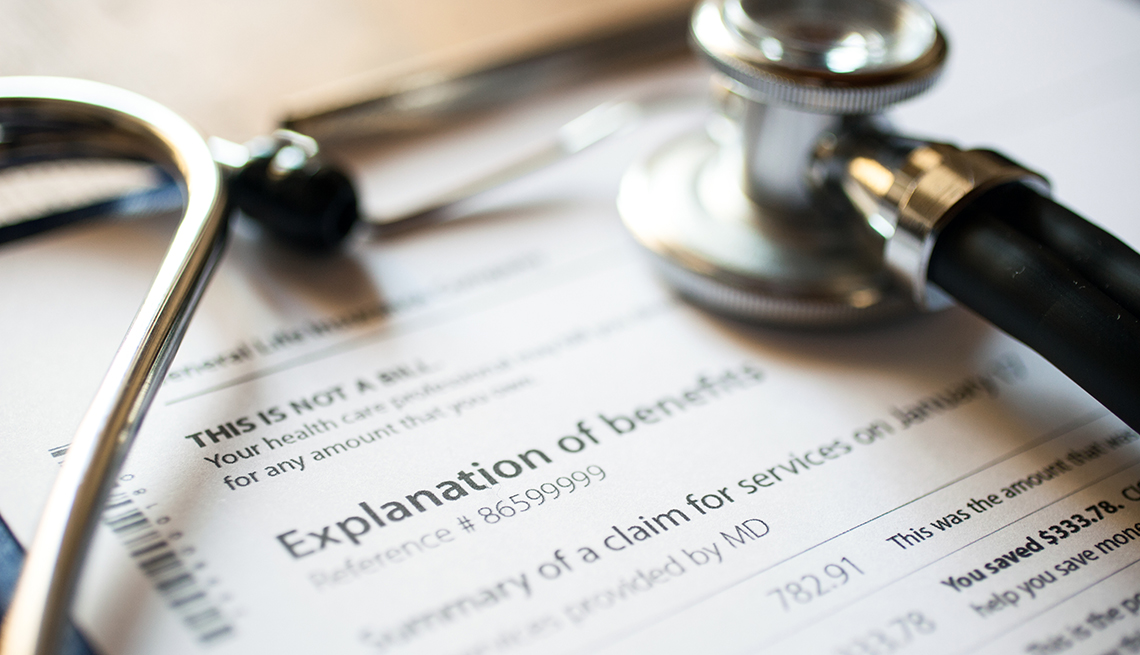Staying Fit
An explanation of benefits, or EOB, is a statement you get from your health insurance company summarizing how it has processed a claim from a doctor, hospital, technician or other medical provider. These statements break down:
- What the provider charged for a treatment or service
- What the insurance company paid
- What you are responsible for paying
An EOB is not a bill (as is usually stated clearly at the top). It is, however, a crucial tool for keeping track of your health care spending and uncovering any billing errors, which could have significant financial consequences. (If you have Medicare, you’ll get its version of an EOB, called a Medicare Summary Notice or MSN.)


AARP Membership— $12 for your first year when you sign up for Automatic Renewal
Get instant access to members-only products and hundreds of discounts, a free second membership, and a subscription to AARP the Magazine.
“It's the first step you have toward checking to see that they're billing you for the right things,” says Caitlin Donovan, spokesperson for the Patient Advocate Foundation, a nonprofit that works to help patients access and pay for health care and medications. “It's also the first place that most patients even have an idea of what they're being charged.”
More advice on avoiding, fighting and paying surprise medical bills
When to expect your EOB
There is no set standard for the period between your insurance company getting a claim from a doctor and you getting an EOB. But many insurers do have a rule of thumb, “and most say 30 days,” says Ingrid C. Lindberg, a former Cigna executive who helped design that company’s EOB.
You will usually get an EOB before the corresponding medical bill. If the bill comes first, don’t pay it yet; it might include only the doctor’s or facility’s charges and not reflect what insurance would pay. “Wait until you see the EOB and have the bill in hand, and you should go over both with a fine-tooth comb,” Lindberg says.
Most health plans also offer digital EOBs via online accounts. You may be able to check claims more quickly this way, or set up email alerts when new EOBs are posted.
An EOB is not a medical bill, but “it's the first step you have towards checking to see that they're billing you for the right things,” says Caitlin Donovan of the Patient Advocate Foundation.
What’s in your EOB
Every insurance company’s explanation of benefits looks different, but all contain roughly the same basic data. Here’s what you’ll see in a typical EOB.
Personal and policy information:
- Your name and address
- Your member number
- Your policy or group name and number
If any of this information is incorrect, it could be a clerical error or, possibly, an unapproved use of your medical identity.
The EOB should also include contacts for your insurer’s customer service department and information about filing a grievance or appealing a claim decision.
Information about treatment:
- The name of the medical provider. This could be a doctor, hospital, clinic, group practice or lab.
- The date you saw the medical provider
- A claim number (or numbers, if the EOB details multiple visits or treatments). If you have questions or concerns about a bill, you’ll need to have the claim number as well as your policy number when you contact your insurer.
- A description of the services provided. This could be one word (“laboratory,” “immunization”) or a brief, sometimes technical description like “X-ray exam lower spine” or “Lipid panel.” Each procedure will usually be accompanied by the five-digit code your insurance company uses to determine how much it will pay your doctor for that service.
Information about payments:
- The full fee the doctor or facility billed for the care you received
- The dollar amount your insurance plan approved for those services. If the doctor is in your plan’s network, this amount will reflect the network discount negotiated by your insurer. Some EOBs list the discount amount separately.
- How much your insurance company paid your doctor for the visit, typically a percentage of the negotiated rate
- How much you have to pay to the provider. This could include any deductible, copays, coinsurance and charges for services your plan does not cover.
































































